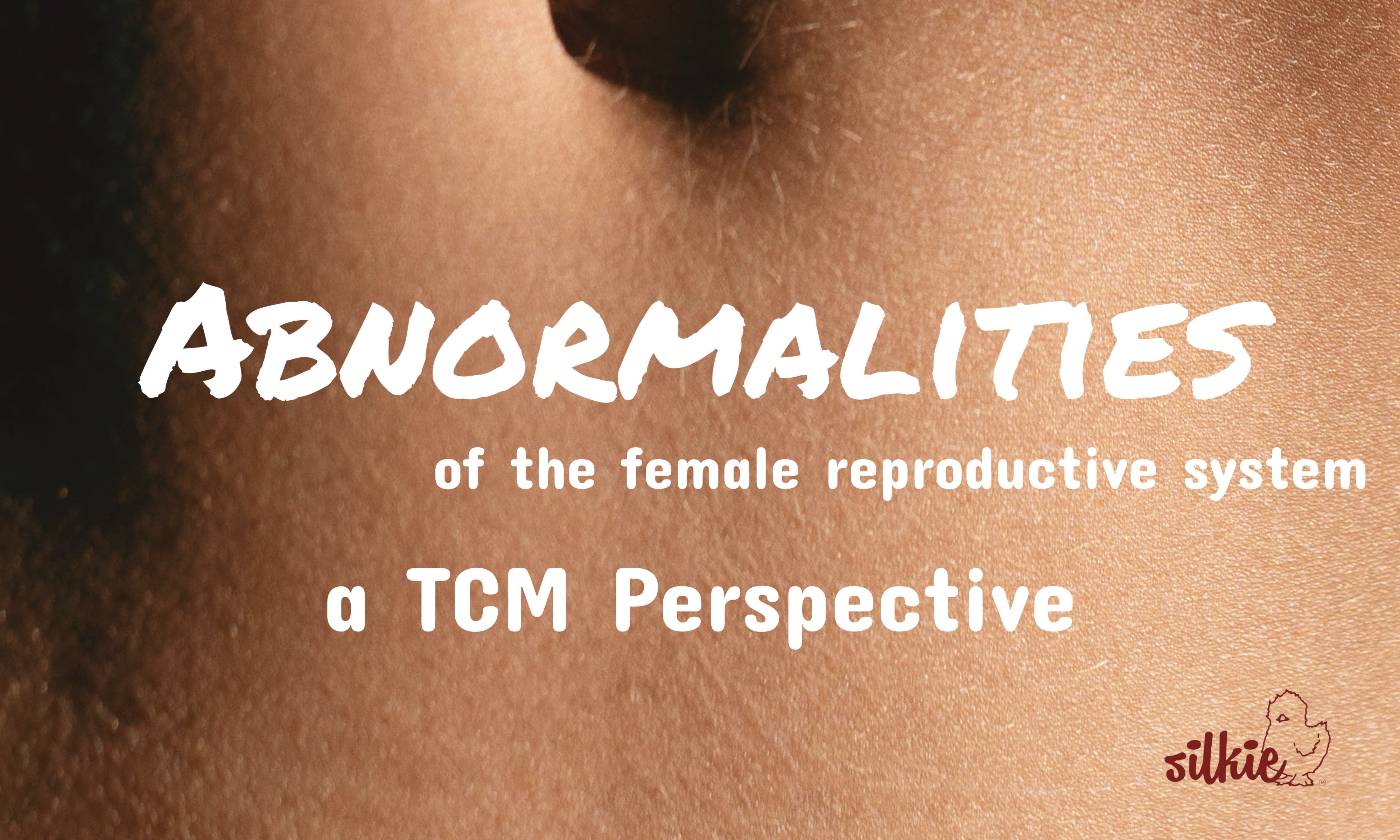Unlocking the Mystery: Exploring the Female Reproductive System

Did you know that the female reproductive system can sometimes develop irregularities that affect how it functions? From the ovaries to the uterus and beyond, these variations can have a big impact on reproductive health. In this easy-to-understand guide, we explore different types of structural abnormalities, what causes them, and how they can be diagnosed and treated. We'll look at both Western medicine and Traditional Chinese Medicine (TCM) perspectives to give you a comprehensive understanding.
Types of Malformations of the Female Reproductive System
- Ovarian Cysts:
- Definition: Fluid-filled sacs developing on the ovaries, some of which may necessitate medical intervention due to symptoms or complications.
- Causes: Varied, with some cysts resolving independently while others may persist or enlarge.
- Symptoms: May range from none to pelvic pain, bloating, or changes in menstruation.
- Diagnosis: Utilizes imaging techniques and sometimes biopsy for confirmation.
- Treatment: Depends on the cyst's nature, size, and symptoms, ranging from watchful waiting to surgical removal.
- Masses:
- Definition: Abnormal growths or lumps occurring in reproductive organs, benign or malignant.
- Causes: Multiple, including genetic predisposition or hormonal imbalances.
- Symptoms: Variable, depending on location and size, often including pain or irregular bleeding.
- Diagnosis: Often via imaging studies or biopsy.
- Treatment: Tailored to the mass's characteristics and may involve surgical removal or other interventions.
- Nodules:
- Definition: Small, localized areas of abnormal tissue thickening, commonly found in the uterus or ovaries.
- Causes: May result from various conditions, including inflammation or scarring.
- Symptoms: Can cause pelvic pain or discomfort, especially if large or numerous.
- Diagnosis: Typically through imaging and sometimes biopsy.
- Treatment: Depending on symptoms and underlying causes, may involve medication or surgical removal.
- Uterine Fibroids:
- Definition: Non-cancerous growths within the uterine wall, presenting with symptoms like heavy menstrual bleeding or pelvic pain.
- Causes: Exact cause unclear, potentially linked to hormonal factors or genetic predisposition.
- Symptoms: Vary widely but can impact fertility and menstrual health.
- Diagnosis: Through pelvic examination and imaging studies.
- Treatment: Ranges from medication to surgical interventions, depending on severity and symptoms.
- Polyps:
- Definition: Growths on the inner lining of the uterus or cervix.
- Causes: Not fully understood but may relate to hormonal influences or chronic inflammation.
- Symptoms: Often associated with abnormal uterine bleeding or infertility.
- Diagnosis: Typically via pelvic examination, ultrasound, or hysteroscopy.
- Treatment: Removal via minimally invasive procedures, medication, or hormonal therapy.
- Endometriosis:
- Definition: Growth of tissue similar to the uterine lining outside the uterus.
- Causes: Factors like retrograde menstruation or genetic predisposition.
- Symptoms: Range from pelvic pain to infertility, depending on the extent of tissue growth.
- Diagnosis: Often through laparoscopy following imaging studies and medical history review.
- Treatment: From pain management to hormonal therapy or surgery, depending on severity.
Western Medicine Perspective on Malformations
From a Western medicine standpoint, various structural abnormalities receive specific attention due to their prevalence and impact on reproductive health. Conditions like endometriosis, cervical abnormalities, fallopian tube issues, and uterine masses are meticulously diagnosed and managed through a combination of medical history review, imaging techniques, and targeted treatments.
Traditional Chinese Medicine (TCM) Perspective
In contrast, Traditional Chinese Medicine (TCM) approaches these malformations through the lens of Qi and blood circulation, aiming to restore balance and harmony within the body. TCM identifies stagnation of Qi and blood, as well as deficiencies, as key factors contributing to these structural abnormalities. Treatment in TCM often involves acupuncture, herbal medicines, dietary adjustments, and lifestyle modifications tailored to individual patterns of disharmony.
In Traditional Chinese Medicine (TCM), Qi and Blood Stagnation and Qi and Blood Deficiency can be illustrated using the analogy of a river flow.
Picture a river flowing smoothly through a vibrant landscape, symbolizing the harmonious flow of Qi and Blood in the body according to TCM principles.
Now, let's introduce the impact of Qi and Blood Stagnation on uterine health. Imagine obstacles like fallen branches, rocks, and debris obstructing the river's path, causing the water to pool and stagnate. Similarly, in the body, Qi and Blood Stagnation occurs when blockages or disruptions in energy flow lead to stagnant Qi and Blood within the uterus. These blockages can result in the formation of uterine masses, nodules, fibroids, or polyps.
Next, consider the concept of Qi and Blood Deficiency. Picture a river with a diminished flow, its waters running shallow and weak. In the body, Qi and Blood Deficiency occurs when there's insufficient nourishment and circulation within the uterus. This deficiency weakens uterine tissues, making them more prone to abnormalities.
In both scenarios, TCM aims to restore balance and harmony to uterine Qi and Blood circulation. For Qi and Blood Stagnation, treatment focuses on removing obstructions and promoting smooth flow through acupuncture, herbal medicine, and therapeutic exercises. Conversely, for Qi and Blood Deficiency, the emphasis is on nourishing and replenishing Qi and Blood through dietary adjustments, herbal remedies, and lifestyle modifications.
Understanding these concepts through the river flow analogy underscores the importance of maintaining balance and vitality in uterine Qi and Blood circulation for overall gynecological health in TCM.
Incorporating herbal formulas into treatment plans can provide holistic support for various uterine-related conditions. Here's a summary of recommended herbal combinations for specific issues:
- Uterine Fibroids (Qi and Blood Stagnation):
- Uterine Formula: 5 to 10 pills, 1-2 times daily.
- Symptoms: Pelvic pain, irregular menstruation, abdominal bloating, and mood swings.
- Uterine Fibroids (Qi and Blood Deficiency):
- Energy: 1 to 3 pills, Kidney Yin: 5 to 10 pills, with Uterine Formula: 3 to 5 pills.
- Symptoms: Fatigue, pale complexion, dizziness, scanty menstruation.
- Endometriomas (Qi and Blood Stagnation with Dampness):
- Uterine Formula: 3 to 5 pills with Ovarian Formula: 3 to 5 pills once or twice daily.
- Symptoms: Pelvic pain or discomfort, irregular, heavy, or prolonged menstruation, abdominal bloating, and mood swings.
- Dermoid Cysts (Liver and Spleen Imbalance):
- Ovarian Formula: 5 to 10 pills with Kidney Yin: 5 to 10 pills.
- Symptoms: Movable lump in the lower abdomen.
- Ovarian Cysts, Follicular Cysts, Corpus Luteum Cysts, Cystadenomas, Polycystic Ovary Syndrome (Dampness and Phlegm Accumulation):
- Ovarian Formula: 5 to 10 pills once or twice daily.
- Symptoms: Pelvic formation of ovarian cysts, masses, or nodules.
Conclusion
Understanding the intricacies of structural abnormalities within the female reproductive system is crucial for comprehensive healthcare delivery. Integrating insights from both Western medicine and Traditional Chinese Medicine offers holistic perspectives and diversified treatment modalities, empowering individuals to navigate their reproductive health journey with informed choices and personalized care.




